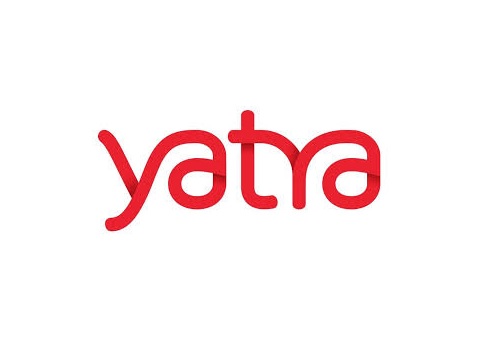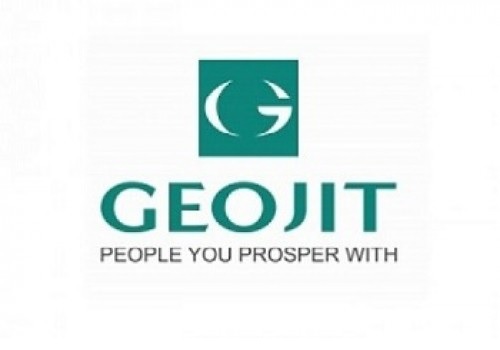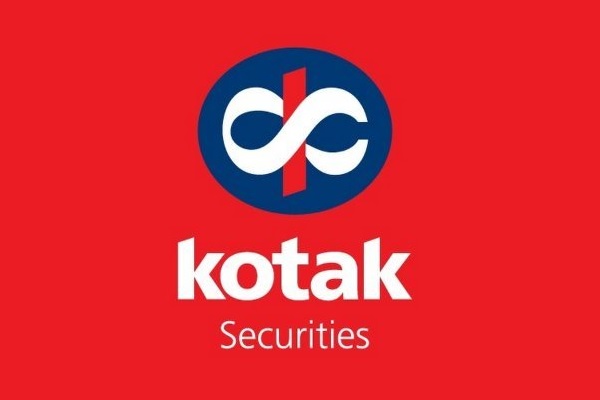Turmeric trading range for the day is 12896-14196 - Kedia Advisory

Gold
Gold prices edged higher by 0.36% to settle at Rs.96,518, supported by a softer U.S. dollar and growing investor caution ahead of the U.S.-China trade talks scheduled for this weekend. President Trump’s suggestion that an 80% tariff on China “seems right,” down from the current 145%, offered some hope of de-escalation, yet uncertainty continues to weigh on sentiment. Additionally, Federal Reserve Bank of New York President John Williams highlighted the downside risks posed by U.S. trade policies, including potential impacts on growth, inflation, and employment, keeping investors on edge. Geopolitical tensions between India and Pakistan further bolstered safe-haven demand. Meanwhile, gold held in London vaults rose by 0.6% in April to 8,536 metric tons, as more metal returned from New York following recent market dislocations. The COMEX also recorded its largest single-day outflow of gold this year, with 28.8 tons (worth $3.1 billion) exiting inventories, signaling strong physical demand. On the retail front, demand dynamics were mixed. Indian gold dealers offered discounts up to $16/oz amid weak demand and high local prices driven by a depreciating rupee, although early-week discounts of $24/oz narrowed to a $3 premium later. In contrast, Chinese demand picked up post-holiday, with premiums rising to $42–$49/oz. Technically, the market is under short covering, as indicated by a 0.47% decline in open interest to 14,355 alongside a Rs.350 price increase. Immediate support lies at Rs.95,990 and further at Rs.95,460, while resistance is seen at Rs.96,895, with potential to test Rs.97,270 if momentum continues.
Trading Ideas:
* Gold trading range for the day is 95460-97270.
* Gold gained on a softer U.S. dollar, with markets looking ahead to the upcoming U.S.-China trade talks
* Fed’s Williams said that the U.S.' trade policy is increasing downside risks to the economy, including the risk of slower growth
* Gold reserves in London vaults rise in April as bullion returns from US
Silver
Silver prices edged higher by 0.22% to close at Rs.96,729 as investors maintained a cautious stance ahead of the pivotal US-China trade negotiations. Market participants are closely monitoring the upcoming meeting between Chinese Vice Premier He Lifeng and US Treasury Secretary Scott Bessent for any signs of easing tariff tensions, which could significantly influence the global commodity outlook. Meanwhile, a preliminary trade agreement between the US and the UK offered some relief, though uncertainty remains high. US Federal Reserve Chair Jerome Powell reiterated a cautious monetary stance, citing rising risks to inflation and employment, and dismissed the possibility of preemptive rate cuts amid trade-driven economic volatility. On the supply side, silver inventories in London rose 3.3% in April to 22,859 tons—the first increase since October 2024—suggesting improving liquidity in physical markets. Despite this, the silver market is expected to register its fifth consecutive annual deficit in 2025, albeit at a narrowed shortfall of 117.6 million ounces. Industrial demand continues to be the primary driver, forecast to reach a record 700+ million ounces, spurred by green economy applications. Technically, the market is under short covering, as reflected by a 1.66% drop in open interest to 16,038 while prices gained Rs.217. Immediate support is seen at Rs.96,075, followed by Rs.95,415. On the upside, resistance lies at Rs.97,220, with a potential test of Rs.97,705 if bullish momentum persists.
Trading Ideas:
* Silver trading range for the day is 95415-97705.
* Silver gains as investors adopted a cautious stance ahead of high-stakes US-China trade negotiations.
* Fed’s Powell reinforced a cautious monetary policy stance, warning of mounting risks to inflation and employment.
* There were 22,859 tons of silver held in London vaults in April, up 3.3 % from March - LBMA
Crude oil
Crude oil prices rose by 0.95% to settle at Rs.5,212 as signs of easing U.S.-China trade tensions lifted market sentiment. Anticipation of a diplomatic breakthrough ahead of the May 10 meeting between U.S. Treasury Secretary Scott Bessent and Chinese Vice Premier He Lifeng in Switzerland bolstered hopes for a resolution to the ongoing trade disputes that have cast a shadow on global oil demand. Despite President Trump’s continued hardline stance—suggesting 80% tariffs on Chinese goods, down from the current 145%—the market reacted positively to the diplomatic developments. However, geopolitical risks persisted, with the U.S. sanctioning a third Chinese oil refinery over Iranian crude purchases, coinciding with the start of nuclear talks in Oman. On the supply front, OPEC+ plans to gradually increase output, but April saw a slight dip in production due to unplanned declines in Libya, Venezuela, and Iraq. Meanwhile, U.S. crude inventories fell by 2.032 million barrels last week, surpassing expectations, with Cushing hub stocks also dropping by 740,000 barrels. The International Energy Agency (IEA) revised down its 2025 oil demand growth forecast to 1 million barrels per day, warning of a potential oversupply of 600,000 bpd—potentially rising to 1 million bpd if OPEC+ extends its output increase. Technically, the market is under short covering, with open interest falling by 1.02% to 14,369 while prices gained Rs.49. Crude oil has support at Rs.5,153, with a potential drop to Rs.5,095 if breached. Resistance lies at Rs.5,262, and a move above could push prices toward Rs.5,313.
Trading Ideas:
* Crudeoil trading range for the day is 5095-5313.
* Crude oil gains as trade tensions between China and the United States showed signs of easing.
* The U.S. imposed sanctions on a third Chinese independent oil refinery for purchases of Iranian crude.
* OPEC oil output edged lower in April as production declines in Libya, Venezuela and Iraq
Natural gas
Natural gas prices surged by 5.08% to settle at Rs.322.4, driven by a notable decline in output and stronger demand expectations. Production in the Lower 48 U.S. states has averaged 103.4 billion cubic feet per day (bcfd) so far in May, down from a record 105.8 bcfd in April. Since peaking at 107.4 bcfd on April 18, output has fallen to an 11-week low of 102.6 bcfd, tightening supply and supporting prices. Concurrently, warmer-than-normal temperatures projected through May 23 are expected to boost demand, especially as gas flows to LNG export terminals rise. U.S. utilities added 104 billion cubic feet (Bcf) to storage for the week ending May 2, aligning closely with market expectations. Total inventories now stand at 2,145 Bcf—3% above the five-year average and within the historical seasonal range. Despite being 16.1% lower than last year’s levels, the storage buffer remains healthy enough to prevent immediate supply concerns, though production cuts and export strength continue to underpin bullish sentiment. Looking ahead, the U.S. Energy Information Administration (EIA) projects record highs for both production and consumption in 2025. Dry gas output is forecast to reach 104.6 bcfd, while domestic consumption is seen rising to 90.7 bcfd. Technically, the market is experiencing fresh buying interest, with open interest spiking by 28.79% to 18,015. Natural gas finds immediate support at Rs.312.3, with deeper support at Rs.302.3. On the upside, resistance is seen at Rs.329.2, and a breakout could take prices toward Rs.336.1.
Trading Ideas:
* Naturalgas trading range for the day is 302.3-336.1.
* Natural gas climbed amid drop in output and forecasts for more demand next week
* US LNG export feedgas hit record high in April
* US gas output hit record high in April
Copper
Copper prices fell by 0.5% to Rs.851.6, pressured by a combination of weak global demand indicators and rising supply levels. Manufacturing PMI data from major economies—China, the US, and Europe—indicated ongoing contraction in factory activity, curbing optimism around base metal consumption. Simultaneously, increased ore output from South America and a significant supply forecast revision by the International Copper Study Group (ICSG), which now expects a surplus of nearly 300,000 tonnes this year, further weighed on prices. The oversupply narrative prompted Chinese traders to unwind long positions in U.S. copper futures, initially taken in response to a U.S. probe into potential copper import tariffs under President Trump. Anticipation of these tariffs also caused a diversion of copper shipments to the U.S., fueling a 61% surge in COMEX copper inventories since March-end to 156,623 tons—levels not seen since October 2018. Despite this, a sharp 60% month-on-month fall in Shanghai Futures Exchange copper inventories in April, dropping to 89,307 tons, suggests improving short-term domestic demand conditions. On the macro front, China's central bank maintained its stimulus trajectory with a 10 basis point lending rate cut and a 50 basis point reserve ratio reduction, offering some demand-side support. Technically, the copper market saw fresh selling pressure as open interest increased by 0.59% to 6,649. Copper now finds support at Rs.846.3, with lower potential at Rs.841.1, while resistance stands at Rs.855.8, and a break above may test Rs.860.1.
Trading Ideas:
* Copper trading range for the day is 841.1-860.1.
* Copper dropped amid weak PMIs from China, US, and Europe signal falling demand
* South American ore output boosts global copper supply
* Copper surplus forecast doubled to 300,000 tonnes for 2025
Zinc
Zinc prices closed marginally lower by 0.02% at Rs.251, as market sentiment remained cautiously optimistic ahead of the scheduled U.S.-China trade talks. Positive remarks from President Trump regarding a potential meeting with Chinese President Xi Jinping helped buoy market expectations. Additionally, China's recent stimulus measures, including cuts to the required reserve ratio and mortgage rates, have been well-received by traders, adding a layer of support to the market. On the supply side, the global refined zinc market is projected to see a surplus in 2025, according to the International Lead and Zinc Study Group (ILZSG). Global refined zinc output is forecast to grow by 1.8% to 13.73 million tons, while demand is only expected to rise by 1% to 13.64 million tons. This imbalance is being driven by improved concentrate availability and anticipated mining rebounds in Russia and the Democratic Republic of Congo, which have also caused international zinc treatment charges to rise—an improvement from the negative charges Chinese smelters faced at the end of 2024. China's refined zinc production in March 2025 rose nearly 14% month-on-month and over 4% year-on-year, exceeding expectations. This was aided by higher zinc concentrate treatment charges, strong sulphuric acid prices, and a post-holiday production ramp-up. Technically, the market is under long liquidation, with open interest down 9.25% to 2,189. Zinc has support at Rs.248.6, with further downside to Rs.246.2, while resistance is at Rs.252.6, and a break above could push prices toward Rs.254.2.
Trading Ideas:
* Zinc trading range for the day is 246.2-254.2.
* Zinc prices steadied on optimism surrounding upcoming U.S.-China trade talks.
* SHFE Zinc inventories fell 2.8% from last release on Apr 30.
* U.S. tariffs on steel caused a spike in coil prices, reducing demand for zinc in galvanization.
Aluminium
Aluminium prices fell by 0.32% to Rs.233.55, pressured by concerns over ample global supply and persistent macroeconomic headwinds. Despite supportive policy actions from China, including continued industrial stimulus, bearish sentiment was driven by strong production figures and trade-related demand uncertainty. China’s aluminium production surged 4.4% year-on-year in March to 3.75 million metric tons, bringing total output for the first quarter to 11.07 million tons—up 3.2% from a year earlier. The world’s largest aluminium producers, particularly those based in China, are also accelerating their overseas capacity expansions as domestic production nears the government-imposed cap of 45 million tons for 2025. On the demand front, weakening global industrial activity added pressure. Manufacturing PMIs in both China and the US continued to signal contraction, while the US-China tariff escalation cast a shadow on export orders. According to the International Aluminium Institute (IAI), global primary aluminium output rose 2.3% year-on-year in March to 6.227 million tonnes. Meanwhile, stocks at Japan’s three major ports dropped 1.2% in March to 309,700 metric tons, indicating limited near-term demand pickup. Goldman Sachs, acknowledging the deteriorating macroeconomic backdrop, its aluminium price forecast to a Q3 2025 low of $2,000 per ton. Technically, the market is under long liquidation, evidenced by a 2.53% drop in open interest to 4,582. Immediate support lies at Rs.232.3, with further downside risk toward Rs.231. Resistance is seen at Rs.235.1, above which prices may test ?236.6.
Trading Ideas:
* Aluminium trading range for the day is 231-236.6.
* Aluminium prices declined amid oversupply concerns and global economic uncertainty.
* Southeast Asian smelters reported improved alumina availability, easing production constraints and costs.
* SHFE aluminium inventories fell 3.5% from last release on Apr 30.
Cottoncandy
Cottoncandy prices settled lower by 0.35% at Rs.54,000, weighed down by weak demand and payment constraints. The market faced additional pressure due to a substantial increase in supply coupled with limited mill buying activity. Mills are well-stocked, reducing their immediate need for fresh purchases. The Cotton Association of India (CAI) revised its domestic cotton production projections downwards by 4 lakh bales to 291.30 lakh bales, mainly due to lower production in Maharashtra. The CAI's total cotton supply estimate till March 2025, including imports, stood at 306.83 lakh bales, with stocks at the end of March pegged at 127.83 lakh bales. This includes 27 lakh bales with mills and 100.83 lakh bales held by various trade bodies. The trade body also lowered its export projections for the 2024-25 season to 16 lakh bales, down from the previous season's 28.36 lakh bales, while imports are expected to more than double to 33 lakh bales due to the shrinkage in domestic production. Global cotton markets are also adjusting projections, with the U.S. reducing export estimates and increasing ending stocks, while global textile mill use declined due to reduced demand in China and Indonesia. Technically, the cottoncandy market is under long liquidation, as evidenced by a 0.41% drop in open interest. Prices have eased by Rs.190, and support is found at Rs.54,000, with further downside potential if this level is broken. Resistance remains at Rs.54,000, and a move above could signal price testing further higher levels.
Trading Ideas:
* Cottoncandy trading range for the day is 54000-54000.
* Cotton dropped amid weak demand and payment constraints.
* Pressure also seen due to a substantial increase in supply and limited mill buying.
* Mills are well-stocked and are not facing immediate purchasing requirements.
* In Rajkot, a major spot market, the price ended at 26112.25 Rupees gained by 0.11 percent.
Turmeric
Turmeric prices settled down by 2.08% at Rs.13,624, largely driven by increased arrivals and weak export inquiries. Arrivals surged significantly, reaching around 57,500 quintals compared to 29,860 quintals in the previous session, putting downward pressure on the market. However, the downside was capped by concerns over low production estimates, particularly in key producing regions like Nanded, where untimely rains have led to smaller rhizomes and potential crop losses. Despite a 10% increase in the area under turmeric cultivation this season, production is expected to fall by 10-15%, reflecting the challenges caused by unfavorable weather conditions. Export data for the period of April to February 2025 showed a notable increase of 11.51%, with turmeric exports reaching 161,229.56 tonnes compared to 144,585.64 tonnes in the same period of the previous year. However, the monthly export figures showed a slight decline in February 2025, with exports at 12,538.77 tonnes, down 2.97% from the previous year. On the import side, turmeric imports surged by 55.21% during the same period, signaling a potential shift in supply dynamics. In the Nizamabad spot market, turmeric prices dropped by 0.71% to Rs.14,336.55, reflecting the broader market sentiment. Technically, the market is under fresh selling pressure, evidenced by an 8.93% increase in open interest. Support is seen at Rs.13,260, with a potential test of Rs.12,896 if this level is breached. Resistance is likely at Rs.13,910, and a breakout above could see prices testing Rs.14,196.
Trading Ideas:
* Turmeric trading range for the day is 12896-14196.
* Turmeric dropped due to increased arrivals and owing to weak export enquiries.
* Total arrivals rose to around 57,500 quintals, up significantly from 29,860 quintals in the previous session.
* However downside seen limited as persistent concerns about low arrivals and lower production estimates.
* In Nizamabad, a major spot market, the price ended at 14336.55 Rupees dropped by -0.71 percent.
Jeera
Jeera prices settled lower by 0.75% at Rs.21,305, weighed down by geopolitical tensions between India and Pakistan and weak demand in both domestic and export markets. The pressure on the market was largely attributed to a drop in domestic buying and a lack of activity from foreign buyers as the retail season concluded. Additionally, the increase in arrivals from major mandis, which rose to 32,900 bags from 28,000 bags, added to the supply-side pressure. The delay in the start of the new cumin crop in Gujarat, owing to unfavorable weather conditions, has contributed to an extended sowing period, pushing back the crop's availability. Despite this, comfortable supplies and subdued export interest are keeping the market under pressure. Export demand during the 2024-2025 season showed an impressive rise of 62.55%, reaching 195,164.58 tonnes compared to 120,062.66 tonnes in the previous year. However, February 2025 exports dropped by 23.92% to 12,996.88 tonnes, reflecting the slower pace of demand. Imports of jeera also dropped significantly by 93.70% during the same period, indicating reduced competition from external sources. In Unjha, a major spot market, prices dropped by 0.52%, settling at Rs.21,966.1. Technically, the market is under fresh selling, as evidenced by an 8.97% increase in open interest. Prices are currently getting support at Rs.21,060, and a move below this could test the Rs.20,800 levels. Resistance is seen at Rs.21,490, with a potential move above this level testing Rs.21,660.
Trading Ideas:
* Jeera trading range for the day is 20800-21660.
* Jeera prices fall amid geopolitical tensions and weak demand
* Total arrivals in major mandis rose to 32,900 bags from 28,000 bags in the previous session, increasing supply side pressure.
* Traders attributed the fall mainly to the conclusion of the retail season and continued inactivity on the part of foreign buyers.
* In Unjha, a major spot market, the price ended at 21966.1 Rupees dropped by -0.52 percent.
Views express by all participants are for information & academic purpose only. Kindly read disclaimer before referring below views
























